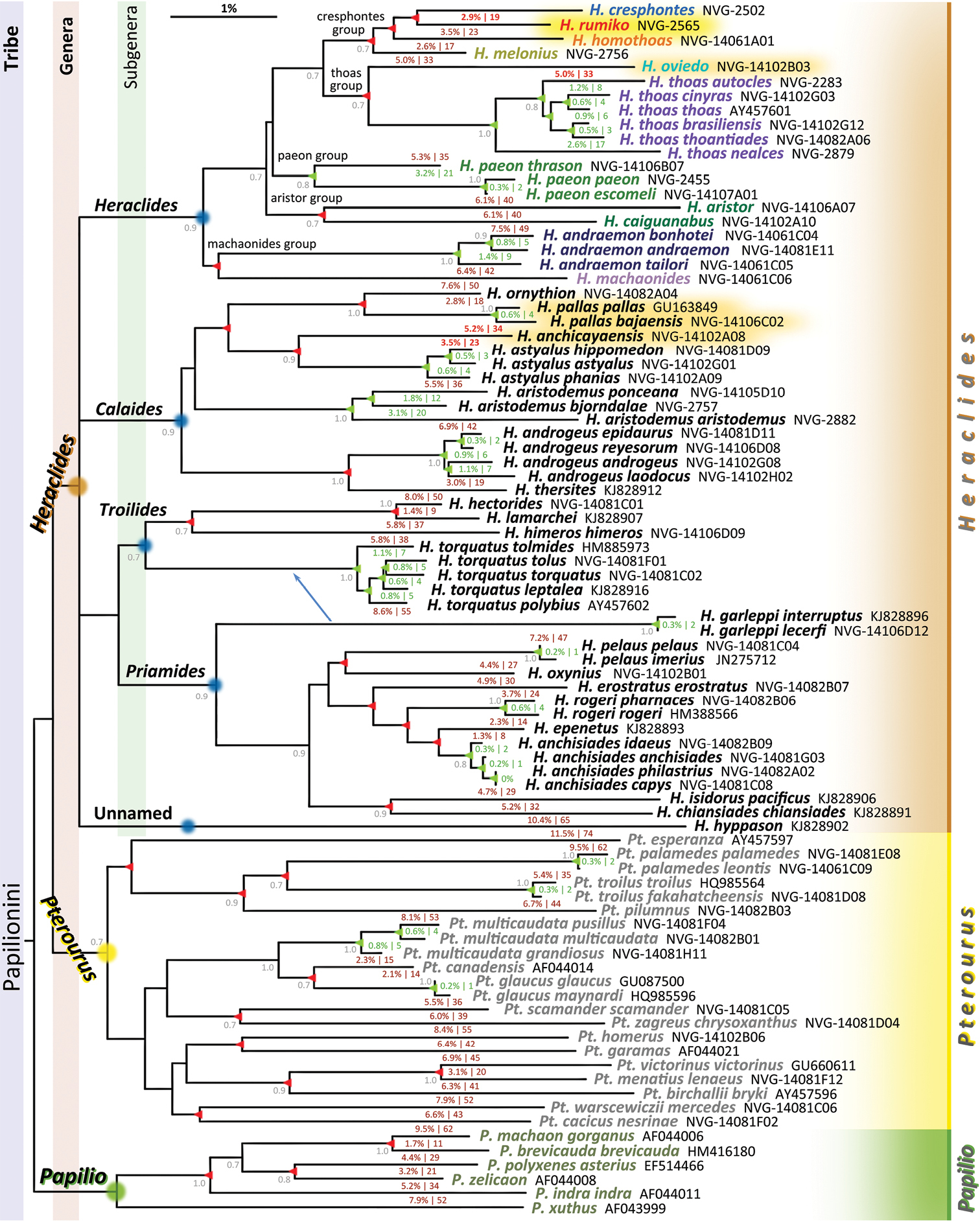
|
||
|
COI DNA barcode distances within Papilionini in a form of a BioNJ (Dereeper et al. 2008) dendrogram built using fraction of nucleotide differences between sequences as distance. The scale bar corresponding to about 1% difference in sequences is shown above the tree. Sequences obtained in this work are with “NVG-” number (see Supplementary Table 1 for data), others are from GenBank (http://genbank.gov/) and are labeled by accessions (letters and numbers, no dashes). Specimens with sequences from GenBank were not examined (except where a photograph was available from the BOLD database) and their identification follows original work, locality, and DNA barcode. Due to small number of phylogenetically informative positions, details of the tree topology especially closer to the root are not expected to be accurate (e.g., topology between subgenera of Heraclides remains unresolved and is shown as a quadfurcation) and the dendrogram is provided only to visualize the classification discussed in the text. Bootstrap values above 0.7 are shown by the nodes in gray font; “percent difference | number of differences” between the adjacent sequences in the dendrogram are shown between the branches. E.g., sequences of H. rumiko and H. homothoas differ by 3.5%, which is 23 base pairs. Differences between species are colored red (to substantiate new name, new status, and new combination) and maroon, and differences between subspecies within species are colored green. Nodes leading to speciation events are marked with red triangles and nodes leading to diversification into subspecies are marked with green triangles. Three Neotropical genera of Papilionini, five subgenera of Heraclides (one unnamed) and five proposed species groups in the subgenus Heraclides are labeled. New species described in this study is highlighted yellow and taxa with proposed changes in taxonomic status or name combination are highlighted orange. Arrow indicates that H. garleppi belongs to subgenus Troilides by morphology, despite its COI barcode being more similar to Priamides. |